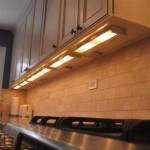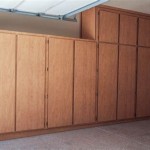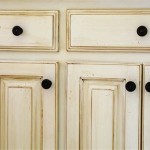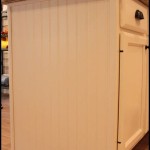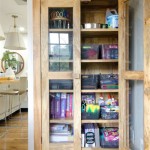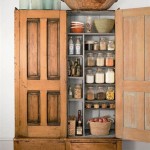DIY Cabinet Locks for Babyproofing Your Home: A Comprehensive Guide
Babyproofing is a critical task for parents and caregivers aiming to create a safe environment for infants and toddlers. As children become mobile, their curiosity leads them to explore every nook and cranny of the home, including cabinets and drawers that may contain hazardous items. Implementing cabinet locks is a fundamental step in preventing accidental ingestion of cleaning supplies, medications, and other dangerous substances. While commercially available babyproofing solutions are readily accessible, creating do-it-yourself (DIY) cabinet locks offers a cost-effective and customizable alternative. This article explores various DIY methods for securing cabinets, providing practical guidance and considerations for implementation.
Understanding the Importance of Cabinet Locks
Young children, particularly those between the ages of six months and three years, are naturally inquisitive and prone to putting objects in their mouths. Cabinets and drawers, being at their eye level and easily accessible, become prime targets for exploration. The contents within, which can range from sharp utensils to toxic chemicals, pose significant risks. Properly installed cabinet locks prevent children from accessing these potentially harmful items, reducing the likelihood of accidents and injuries. Comprehensive babyproofing, including cabinet locks, contributes to a more secure and peaceful home environment for both the child and the caregivers.
The selection of appropriate cabinet locks depends on several factors, including the type of cabinets, the contents of the cabinets, and the child’s developmental stage. Certain locks may be more suitable for specific cabinet designs, such as those with knobs, handles, or flush doors. Parents must also consider the durability and reliability of the chosen locking mechanism. A lock that is easily bypassed or broken is ineffective and provides a false sense of security. Regular inspection and maintenance of cabinet locks are essential to ensure their continued functionality.
DIY Cabinet Lock Methods: Design and Implementation
Several DIY approaches can be employed to create effective cabinet locks. These methods range from simple, low-cost solutions to more complex and robust designs. The choice of method depends on the parents' technical aptitude, available materials, and desired level of security. Each method presents its own advantages and disadvantages, which must be carefully weighed before implementation.
1. Knob and Handle Locks Utilizing Elastic Bands and Cords:
One of the simplest DIY cabinet lock methods involves using elastic bands or cords to connect knobs or handles. This approach is best suited for cabinets with knobs or handles positioned relatively close together. A sturdy elastic band, such as a thick rubber band or a bungee cord, is looped around both knobs or handles, preventing the cabinet doors from being opened. For added security, multiple elastic bands can be used. Alternatively, a length of cord can be tied around the knobs or handles, creating a similar barrier. The knot should be securely tied and positioned in a way that makes it difficult for a child to untie. This method offers a quick and easy solution for basic cabinet security.
The advantages of this method include its low cost and ease of implementation. Elastic bands and cords are readily available in most households. However, it is important to choose durable and high-quality materials that can withstand repeated use and potential pulling or tugging by a child. The disadvantages include its relatively low level of security. A determined child may be able to stretch or break the elastic band or untie the cord. Furthermore, this method is not suitable for cabinets with knobs or handles that are widely spaced or absent.
2. Magnetic Latch Systems Using Simple Materials:
A more sophisticated DIY cabinet lock involves creating a magnetic latch system. This method requires a small, strong magnet and a metal strike plate. The magnet is attached to the inside of the cabinet door, while the metal strike plate is attached to the inside of the cabinet frame. When the door is closed, the magnet attracts the strike plate, holding the door securely shut. To open the cabinet, a separate, stronger magnet is used to override the cabinet's magnet, releasing the door.
The implementation of this method involves several steps. First, the magnet and strike plate must be securely attached to the cabinet door and frame, respectively. This can be achieved using strong adhesive or screws. It is important to ensure that the magnet and strike plate are properly aligned to ensure a secure latch. Second, a separate, stronger magnet must be obtained to open the cabinet. This magnet should be stored in a safe place, out of reach of children. To open the cabinet, the stronger magnet is held against the outside of the cabinet door, directly over the internal magnet. This overrides the internal magnet’s pull, allowing the door to be opened.
The advantages of this system include its relatively high level of security and its aesthetic appeal. The locks are hidden from view, maintaining the cabinet's original appearance. However, this method requires more technical skill and materials than the elastic band or cord method. The magnets must be strong enough to hold the door securely shut, but not so strong that they are difficult for adults to open. Additionally, proper alignment of the magnet and strike plate is crucial for the system's effectiveness.
3. Utilizing Existing Hardware and Creating Basic Latches:
Many cabinets already possess pre-existing hardware, such as screws or bolts, that can be repurposed to create a simple latch system. This method involves strategically placing screws or bolts in a way that prevents the cabinet door from opening fully. For example, a screw can be inserted into the cabinet frame in a position that blocks the door from swinging open. A small piece of wood or plastic can be used to create a more substantial barrier.
The implementation of this method requires careful planning and execution. The placement of the screws or bolts must be precise to effectively block the door without damaging the cabinet. It is also important to ensure that the screws or bolts are securely fastened to prevent them from being dislodged. This method is particularly well-suited for cabinets with recessed doors or frames that provide a natural barrier for the latch.
The advantages of this method include its low cost and its ability to blend seamlessly with the cabinet's existing hardware. However, it requires careful planning and execution to ensure its effectiveness. The screws or bolts must be positioned in a way that effectively blocks the door without causing damage. Additionally, this method may not be suitable for all types of cabinets, particularly those with flush doors or frames.
Factors to Consider When Choosing a DIY Cabinet Lock Method
Selecting the most appropriate DIY cabinet lock method requires careful consideration of several key factors. These factors include the type of cabinets, the contents of the cabinets, the child’s developmental stage, and the parents’ technical aptitude. Each factor influences the effectiveness and suitability of the chosen method.
1. Cabinet Type and Design:
The design of the cabinets plays a significant role in determining the most effective type of lock. Cabinets with knobs or handles are well-suited for locks that utilize elastic bands or cords. Cabinets with flush doors or frames may require more sophisticated latch systems. The size and shape of the cabinet doors also influence the choice of lock. Larger, heavier doors may require more robust locking mechanisms.
2. Cabinet Contents:
The nature of the items stored within the cabinets also influences the choice of lock. Cabinets containing highly hazardous materials, such as cleaning supplies or medications, require more secure locking mechanisms. Cabinets containing less dangerous items, such as toys or clothing, may be adequately secured with simpler locks.
3. Child's Developmental Stage:
A child's developmental stage and cognitive abilities must be considered when selecting cabinet locks. As children grow older and more adept at problem-solving, they may be able to bypass simpler locks. Parents must adapt their babyproofing strategies to keep pace with their child's increasing skills. Regularly testing the locks and reinforcing them as needed is crucial.
4. Parental Technical Aptitude:
The parents' technical skills and experience also influence the choice of lock. More complex locking systems may require more advanced tools and techniques. Parents who are less comfortable with DIY projects may prefer simpler, more straightforward methods.
Safety Considerations and Best Practices
Regardless of the chosen DIY cabinet lock method, safety should always be the top priority. Several safety considerations and best practices must be followed to ensure the effectiveness and safety of the locks.
Firstly, all materials used in the construction of the locks should be non-toxic and free from small parts that could pose a choking hazard. Sharp edges should be smoothed or covered to prevent injuries. Secondly, the locks should be regularly inspected to ensure that they are functioning properly and that they have not been damaged or weakened. Any damaged or ineffective locks should be repaired or replaced immediately. Thirdly, parents should educate themselves and other caregivers on how to operate the locks properly. Clear instructions should be provided to ensure that everyone knows how to open and close the cabinets safely. Finally, no cabinet lock should be considered a substitute for adult supervision. Children should always be supervised when they are in areas where potentially hazardous items are stored, even if those items are secured with locks.
In conclusion, DIY cabinet locks provide a cost-effective and customizable solution for babyproofing homes. By carefully considering the factors outlined above, parents and caregivers can choose the most appropriate methods and create a safe environment for their children. Regular inspection and maintenance, combined with diligent adult supervision, are essential to ensure the continued effectiveness of these safety measures.

Easy Fix For Baby Latch Diy Stuff Proofing

Inexpensive And Effective Cabinet Lock For Baby Proofing Diy Stuff S

Travel Child Proofing And Easy Tips S Baby Proof Drawers

Diy Child Safety Locks That Actually Work Instructables

Diy Baby Proofing S For Pas Child Guard Slider

Rimiclip A New Kind Of Painless Child Safety Latch Baby Proofing S Toddler

10 Clever Low Cost Diys To Baby Proof Your Home

Child Safety Cabinet Locks 10 Pack Baby Proofing Latches Lock For Drawers Toilet Seat Fridge Oven With Extra 3m Adhesives Black Com

Best Diy Child Proof Drawer Appliance Latch Childproofing Dresser Drawers Baby

Cabinet And Drawer Locks For Babyproofing Your Home
Related Posts

